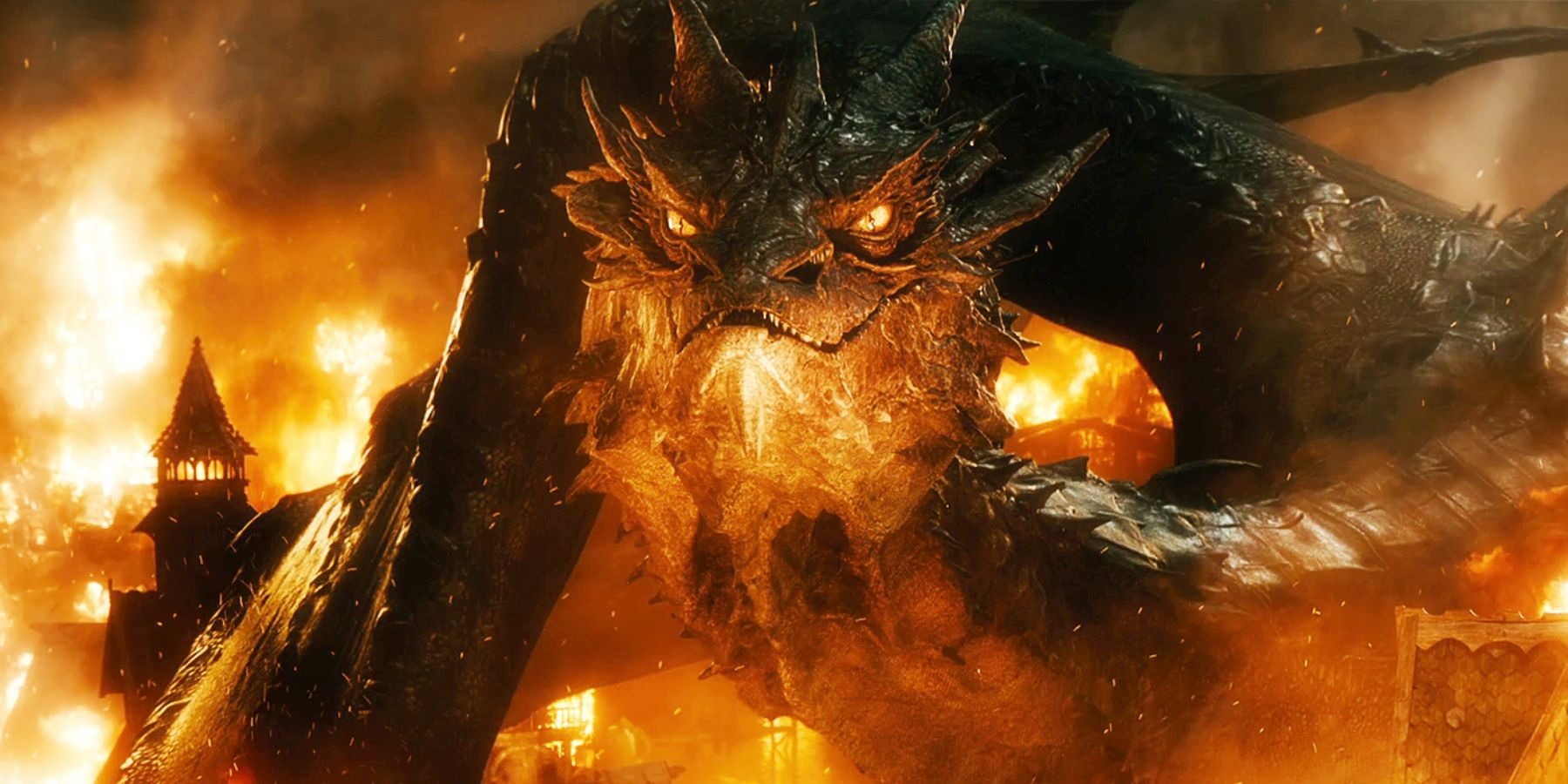
The Epic Death of Smaug: A Tale of Dragon's Demise

Exploring the differences between Smaug's death in the novel and the movie adaptation, and the creative challenges faced by VFX artist James Willingham in bringing the epic dragon's demise to life.
Smaug's Death: Novel vs. Movie
In the novel by J.R.R. Tolkien and in the third Hobbit film, Smaug meets his end in a dramatic and intense sequence. VFX artist James Willingham sheds light on the creative challenges he faced in bringing Smaug's death to life in the movie adaptation. Smaug, the menacing dragon, is slain by a black arrow fired by Bard the Bowman, but the approach to his demise differs between the book and the film.
Bard drawing an arrow in The Hobbit.
In the book, Bard kills Smaug by firing his final black arrow into the one spot on Smaug not covered in protective scales. The novel features a talking thrush who informs Bard of Smaug's weak spot, providing him with the knowledge to defeat the dragon. However, the movie takes a different approach, adding a dramatic twist to Bard's discovery of Smaug's weakness. As Smaug taunts Bard, he notices the dragon's vulnerability through his own observations, leading to a more intense and personal confrontation with the dragon.
The movie's portrayal of Smaug's death adds depth to Bard's character, as it emphasizes his agency in crafting a makeshift bow and working with his son to defeat the dragon. This adaptation gives Bard a more active role in Smaug's demise, making the scene more dramatic and personal than in the book. While the novel and the movie take different approaches, both depict a riveting and unforgettable end to the menacing dragon, Smaug.
The Creative Vision for Smaug's Death
VFX artist James Willingham shares insights into the creative process behind Smaug's death in The Hobbit: The Battle of the Five Armies. Willingham's initial pitch for Smaug's death involved a more complex and drawn-out sequence, envisioning the dragon crashing down like a 747 and coughing up lava blood before ultimately perishing. However, the final version of Smaug's demise in the completed movie was streamlined to align with Peter Jackson's vision, emphasizing a more direct and impactful conclusion for the iconic dragon.
Willingham's creative vision for Smaug's death, although ambitious, faced challenges in balancing spectacle with narrative impact. His desire to create a grand spectacle of the dragon's demise clashed with the director's preference for a more focused and emotionally resonant conclusion. The collaborative process between the VFX team and the director ultimately shaped the compelling and memorable depiction of Smaug's death in the film, showcasing the intricate balance between creative ambition and narrative coherence.
The Legacy of Smaug's Demise
Smaug's death in The Hobbit: The Battle of the Five Armies stands as a testament to the enduring impact of cinematic storytelling. The iconic dragon's demise, brought to life through the collaborative efforts of VFX artists and the director, captures the essence of a legendary confrontation between man and beast. While the novel and the movie offer distinct portrayals of Smaug's demise, both versions contribute to the rich tapestry of the Hobbit saga, each leaving an indelible mark on the imaginations of audiences.
The creative challenges and artistic decisions surrounding Smaug's death exemplify the intricate balance between fidelity to the source material and the demands of cinematic adaptation. VFX artist James Willingham's innovative vision and the director's narrative sensibilities converge to deliver a cinematic spectacle that resonates with fans and enriches the legacy of Smaug's epic demise.








